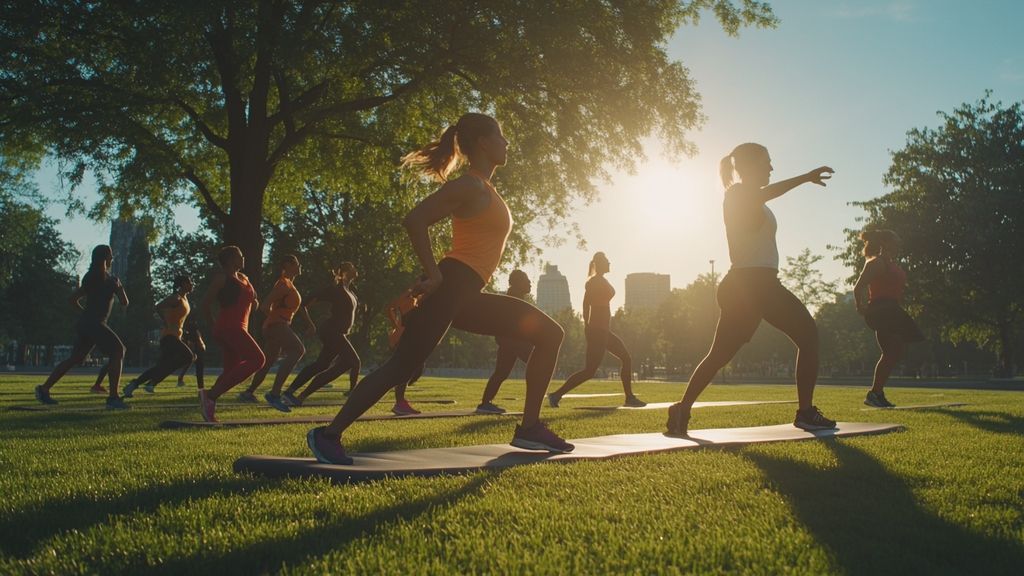Fitness enthusiasts often focus on strength building and high-intensity workouts, but flexibility is just as crucial, especially for CrossFit athletes. With the dynamic and varied movements that characterize CrossFit, incorporating essential stretches into your routine can lead to better performance and quicker recovery. Neglecting flexibility can hinder your progress and increase the risk of injury. This article explores the importance of flexibility, delving into essential stretches that every CrossFit athlete should integrate into their regimen for improved mobility and overall wellness.
The importance of flexibility in CrossFit cannot be overstated. Many workouts, or WODs, require athletes to perform movements that demand a considerable range of motion, such as deep squats and overhead presses. Flexibility aids in maintaining the quality of these movements, helping athletes achieve optimal performance levels. Additionally, innovation in training has introduced various exercises that can affect joint health over time, making it crucial to navigate them with adequate limb and muscle elasticity.
The Role of Flexibility in CrossFit
Understanding Flexibility
Flexibility is the ability of muscles and joints to move through their full range of motion. Many CrossFit exercises place significant stress on the musculature and joints, which can lead to tightness and discomfort if flexibility is compromised. Some of the benefits of flexibility include:
- Increased range of motion
- Lower risk of injury
- Improved posture
- More effective workouts
With well-established evidence supporting the necessity of flexibility, athletes should integrate stretching into their routine to optimize their performance and decrease potential injuries. Focusing on flexibility is not an isolated aspect of training; it enhances strength training efforts, allowing individuals to push their limits further without compromising safety.
Benefits of Stretching for CrossFit Athletes
Stretching provides physical and mental benefits for CrossFit athletes seeking to improve their overall fitness experience. Regular stretching can:
- Enhance recovery by promoting circulation and nutrient flow in the muscles.
- Prepare the body for intense WODs, reducing muscle stiffness.
- Relieve tension accumulated during strenuous workouts, allowing for better mental clarity.
Despite these advantages, stretching is often underestimated or overlooked by athletes. It’s essential to establish a consistent stretching routine that complements the intensity of CrossFit workouts.
Essential Stretches for CrossFit Recovery

Runner’s Lunge with Rotation
The runner’s lunge with rotation is a fantastic stretch for targeting multiple muscle groups simultaneously. This exercise not only prepares the body for tough training sessions but also works effectively as a post-workout flexibility exercise. Here’s how to do it:
- Take a large step forward with your right leg into a deep lunge, keeping your back leg straight.
- Place both hands on the ground beside your front foot.
- With your left hand remaining on the ground, rotate your torso and extend your right arm toward the ceiling.
- Return to the starting position and repeat 4-6 times before switching sides.
This stretch effectively targets the quadriceps, hamstrings, gluteus maximus, and hip flexors. It’s excellent for warming up before a workout or aiding in recovery afterward.
Seated Hamstring Stretch
A classic stretch, the seated hamstring stretch, is crucial for enhancing flexibility in the hamstrings and relieving lower back tightness. To perform this stretch:
- Sit on the floor with your legs extended in front of you, toes pointing straight up.
- Lower your chest toward your thighs while reaching for your toes. Go as far as comfortable without rounding your lower back.
- Hold this position for 30 seconds to a minute, then release.
The seated hamstring stretch targets the hamstrings and gluteus maximus and is particularly beneficial for those who perform high-intensity workouts that engage these muscles.
More Stretches to Incorporate
Cat-Cow Stretch
This yoga move is excellent for mobilizing the spine and relieving tension from long periods of sitting or high-intensity workouts. To practice the cat-cow stretch:
- Start on all fours with a flat back.
- Inhale deeply, arch your back, and lift your head (cow pose).
- Exhale, round your spine, and tuck your chin to your chest (cat pose).
- Repeat for 5-10 cycles.
This dynamic stretching sequence primarily targets the erector spinae and enhances overall spinal flexibility, crucial for many CrossFit movements.
Downward and Upward Facing Dog
The combination of downward and upward facing dog stretches provides a comprehensive workout for multiple muscles in your upper and lower body. Here’s how to perform them:
- Start in a push-up position, ensuring your core is engaged.
- For downward dog, lift your hips up and back, forming an inverted V-shape.
- Transition into upward dog by lowering your hips towards the ground and lifting your chest while keeping your arms straight.
- Alternate between these poses smoothly for several repetitions.
This movement stretches your hamstrings, gluteus maximus, deltoids, and significantly aids in improving shoulder flexibility.
Final Considerations for CrossFit Stretching

Maximizing the Benefits of Stretching
For athletes, structuring a stretching routine is vital for maximizing flexibility benefits. Aim to stretch post-workout as your muscles are warm to prevent injuries and improve flexibility. Hold stretches for at least 30 seconds, gradually easing into more challenging positions.
Establish a daily stretching routine for consistent progress. Remember to listen to your body and back off if you encounter pain. Incorporating dynamic stretching before workouts and static stretching after can enhance physical performance and recovery.
Ultimately, improving flexibility is not a quick fix but a continuous process. With dedication and regular practice, CrossFit athletes can reap more significant performance benefits while reducing injury risks.
